
A Personal View of Japanese Contemporary Art: Takahashi Ryutaro Collection
The Museum of Contemporary Art Tokyo (MOT) presents the exhibition “A Personal View of Japanese Contemporary Art: Takahashi Ryutaro Collection”. Presently comprising over 3,500 items, the Takahashi Ryutaro Collection is reputed as one of the most important collections of Japanese contemporary art in terms of both quality and quantity. A showcase of outstanding works by artists with a highly critical mindset, this exhibition explores the state of contemporary Japan from the specific viewpoint of a 1946-born art collector.
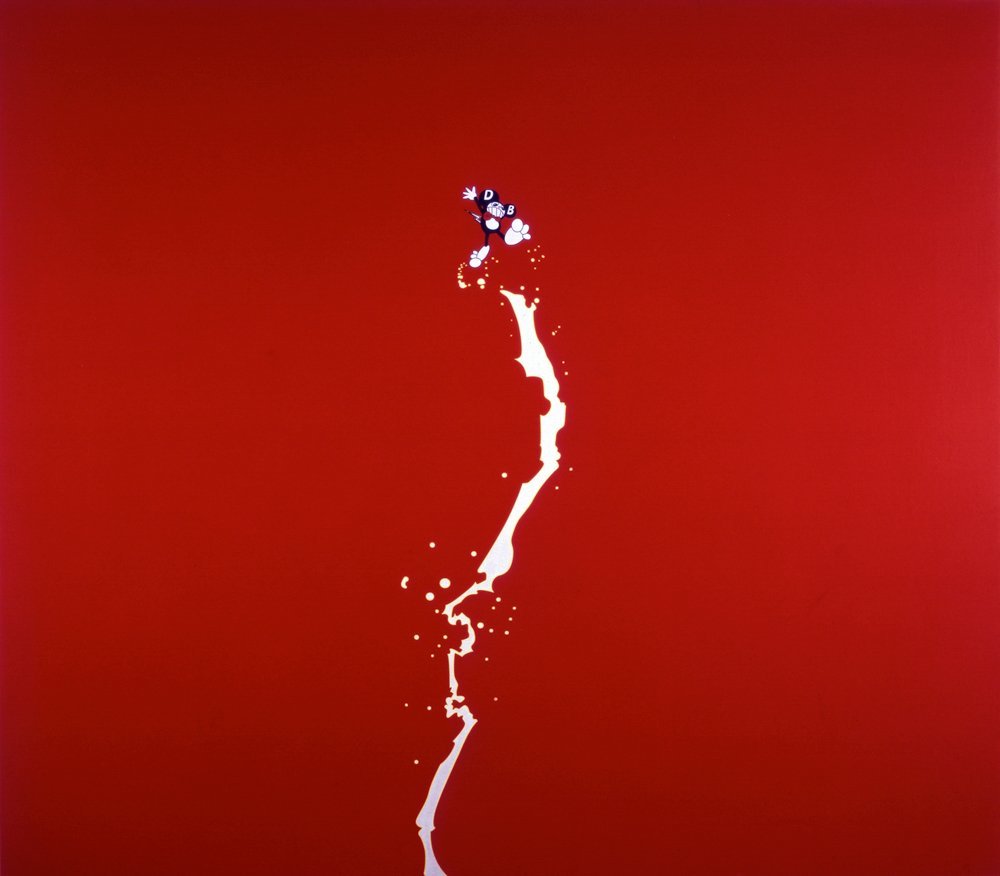
MURAKAMI Takashi, ZuZaZaZaZaZa, 1994
H.150 × W.170 × D.7.5 cm © 1994 Takashi Murakami/ Kaikai Kiki Co., Ltd. All Rights Reserved.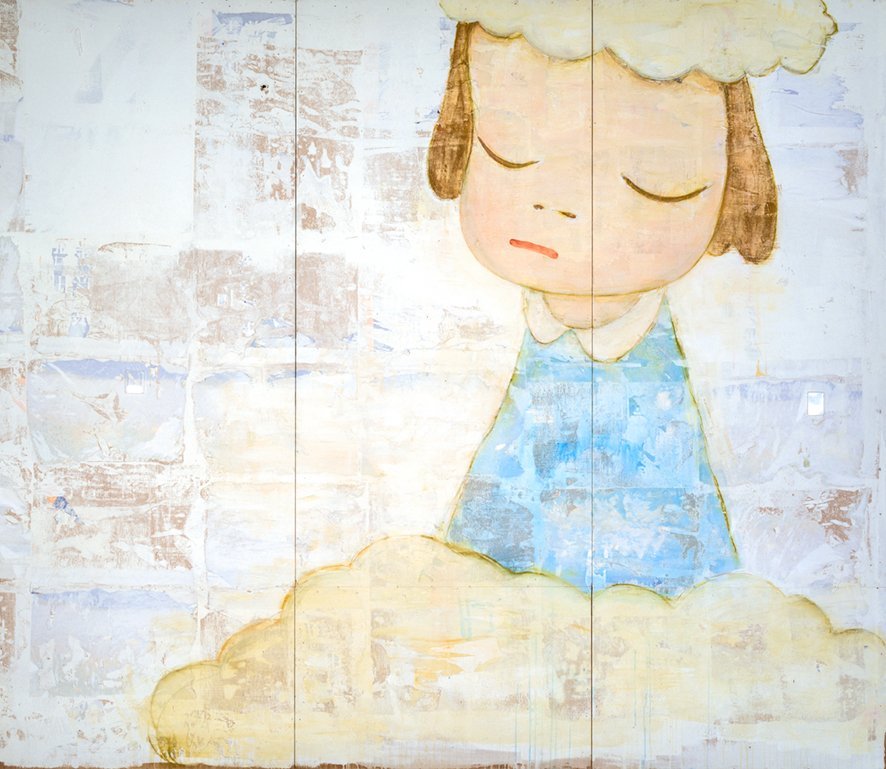
NARA Yoshitomo, Untitled, 1999
H.240 × W.276 cm © NARA Yoshitomo, courtesy of Yoshitomo Nara Foundation
The exhibition is modeled around the personal viewpoint of TAKAHASHI Ryutaro as one face representing postwar Japan. Born in 1946, and growing up as a spearhead of the baby boomer generation, he joined the Zenkyoto student movement, and was directly exposed to the dense mixture of culture and politics that was filling the air in Tokyo in the 1960s. From there, he went on to put effort into encouraging local medical care such as day care as a psychiatrist. From the mid-90s, when his business was stably on track, he started collecting Japanese contemporary art, and has to this day acquired a total of more than 3,500 artworks. TAKAHASHI can thus be seen as someone who has been observing the trends and currents in Japanese contemporary art from the inside, while at the same time embodying essential aspects from the position of the audience as opposed to that of the artists. In addition to works that seem to reflect the state of Japan in the 1990s and 2000s, which in a way represent the Takahashi Ryutaro Collection at large, this exhibition also focuses on a new direction that the collection took after the Great East Japan Earthquake, reflecting the changing times and values.
The time of the Takahashi Ryutaro Collection’s formation coincides with the opening of the MOT in 1995. Both collections were largely built in the city of Tokyo during the so-called “lost 30 years” after the burst of the economic bubble in Japan, and the relationship between them can be understood as mutually complementary. The artworks that were created to combat the state of stagnation in Japanese society, TAKAHASHI refers to as the “cries and living evidence of young artists.” This exhibition is an occasion that introduces one personal perspective onto the art historical currents that the MOT has been presenting, and at the same time, it is a precious opportunity that offers a comprehensive overview of essential and incisively critical works of Japanese contemporary art.
Artists
SATOMI Katsuzo|KUSAMA Yayoi|SHINOHARA Ushio|HANAGA Mitsutoshi|UNO Akira|NAKAMURA Kimpei|TSUKASA Osamu|YOKOO Tadanori|AKASEGAWA Genpei|MORIYAMA Daido|ARAKI Nobuyoshi|GODA Sawako|TATEISHI Tiger|YAMAGUCHI Harumi|SUGA Kishio|SORAYAMA Hajime|NISHIMURA Yohei|HIGASHIONNA Yuichi|FUNAKOSHI Katsura|MORIMURA Yasumasa|OHTAKE Shinro|OKAZAKI Kenjiro|O JUN|KOBAYASHI Masato|MAEMOTO Shoko|NEMOTO Takashi|NARA Yoshitomo|YANAGI Yukinori|KONOIKE Tomoko|Taro CHIEZO|MURAKAMI Takashi|MURASE Kyoko|∈Y∋|AIDA Makoto|Oscar OIWA|OZAWA Tsuyoshi|YANOBE Kenji|TENMYOUYA Hisashi|CHIBA Kazumasa|NISHIO Yasuyuki|YANAGI Miwa|KOIDE Naoki|KATO Izumi|KAWASHIMA Hideaki|Mr.|YAMAGUCHI Akira|OKADA Hiroko|MACHIDA Kumi|ISHIDA Takashi|ODANI Motohiko|KAZAMA Sachiko|SHIOTA Chiharu|NINAGAWA Mika|IKEDA Manabu|MISE Natsunosuke|MIYANAGA Aiko|Kasetsu|KATO Mika|TAKEMURA Kei|Tabaimo|NAWA Kohei|TAMAMOTO Nana|KUNIMATSU Kineta|TAKEKAWA Nobuaki|DEKI Yayoi|IMAI Shunsuke|KANEUJI Teppei|KUDO Makiko|SUZUKI Hiraku|IMAZU Kei|KONISHI Toshiyuki|KOBASHI Yosuke|SHIGA Lieko|CHIBA Masaya|MOHRI Yuko|AOKI Mika|KUWATA Takuro|UMETSU Yoichi|Enrico Isamu OYAMA |SAKAMOTO Natsuko|BABU|MURAYAMA Goro|MORI Osamu|MATSUI Erina|MATSUSHITA Tohru|yang02 |AOKI Yutaka|UMEZAWA Kazuki|SATO Ataru|TANIHO Reina|DIEGO|YUMISASHI Kanji|KONDO Aki|SHOJI Asami|MITOBE Nanae|Nile KOETTING|KAWAUCHI Rikako|WAKUI Tomohito|ob|FUJIKURA Asako|MURAKAMI Saki|BIEN|ISHIGE Kenta|Namonaki Sanemasa|TSUCHITORI Fumika|YAMADA Kohei|TOMOZAWA Kotao|YAMANAKA Yukino|Chim↑Pom from Smappa!Group|SIDE CORE / EVERYDAY HOLIDAY SQUAD|KOMAKUS|NAKAHARA Minoru*|KUBO Mamoru*|HACHIYA Kazuhiko*
(*from the collection of Museum of Contemporary Art Tokyo)
Highlights
■Works by 115 individual and groups of artists, from legendary figures to promising young creators, make up a comprehensive showcase of Japanese contemporary postwar art.
As a collection that focuses mainly on Japanese contemporary art, the Takahashi Ryutaro Collection is one of the biggest of its kind in the world. Through a special selection of works, this exhibition aims to present an overview of the massive collection of over 3,500 items in total, and at once function as an introduction and definitive guide to Japanese contemporary art. Far superior to the average private art collection in terms of scale, the exhibition comprises dynamic displays that fill two entire floors of the Museum of Contemporary Art Tokyo.

KUSAMA Yayoi, Pumpkin, 1990
H.130 × W.162 cm © YAYOI KUSAMA
■Highlights from a spirited collection, selected from the viewpoint of the most prominent collector of Japanese contemporary art
Following the ”neoteny japan – Takahashi Collection” exhibition in 2008 (at Kirishima Open-Air Museum/Kagoshima and others), exhibitions of the Takahashi Ryutaro Collection, which include numerous essential works especially of Japanese contemporary art since the 1990s, have been shown repeatedly at art museums in Japan and abroad. This show of selected items traces from one collector’s “personal view” the path of the collection as it continued to change and develop, from its early days, via the period after the Great East Japan Earthquake, to the present day.

AIDA Makoto, A Picture of an Air-Raid on New York City (War Picture Returns), 1996
H.174 × W.382 cm CG of Zero fighters created by MATSUHASHI MutsuoⒸ AIDA Makoto, Courtesy of Mizuma Art Gallery Photo: MIYAJIMA Kei
The 6 Sections of the Exhibition
1. Prenatal Memory
In 1946, the year after the end of the war, the Constitution of Japan was established. Also born in the same year was TAKAHASHI Ryutaro, the man whose “personal view” is reflected in this exhibition. This section examines the cultural situation in Japan during the approximately 50 years between the end of the war and the mid-1990s when TAKAHASHI seriously started collecting artworks, as the collection’s “prenatal memory” of sorts that TAKAHASHI went on to recall through his collection of works by artists that had made an impact on him when he was young.
2. An End and A New Beginning
The Takahashi Ryutaro Collection seriously took off in the mid-1990s, a time that marked the end of the “postwar” era in Japan, and the beginning of a period of low economic growth that still continues today. It was at once a time when contemporary art had begun to circulate on an increasingly global scale, and numerous artists emerged that expressed through their works fierce criticism toward Japanese culture and society. For someone like TAKAHASHI, who had developed an admiration for art as a statement of protest in the late 1960s, their works were highly stimulating. This section revolves around works that may be categorized as “portraits of postwar Japan,” many of which are representative of the Takahashi Ryutaro Collection at large.

IKEDA Manabu, History of Rise and Fall, 2006
H.200 × W.200 cm © IKEDA Manabu, Courtesy of Mizuma Art Gallery Photo by Horiuchi Color Ltd.
3. New Types of Humans
Outlining the maturing stage of the Takahashi Ryutaro Collection, this section focuses especially on works that depict human figures – one of the collection’s central themes. The desire to address all kinds of human aspects by way of art, and explore the roots of creativity, is an undercurrent that continues to inform the endeavors of the collector and psychiatrist, TAKAHASHI Ryutaro. Exhibits range from renowned works – somewhat the collection’s trademarks – to the most recent creations of young artists.
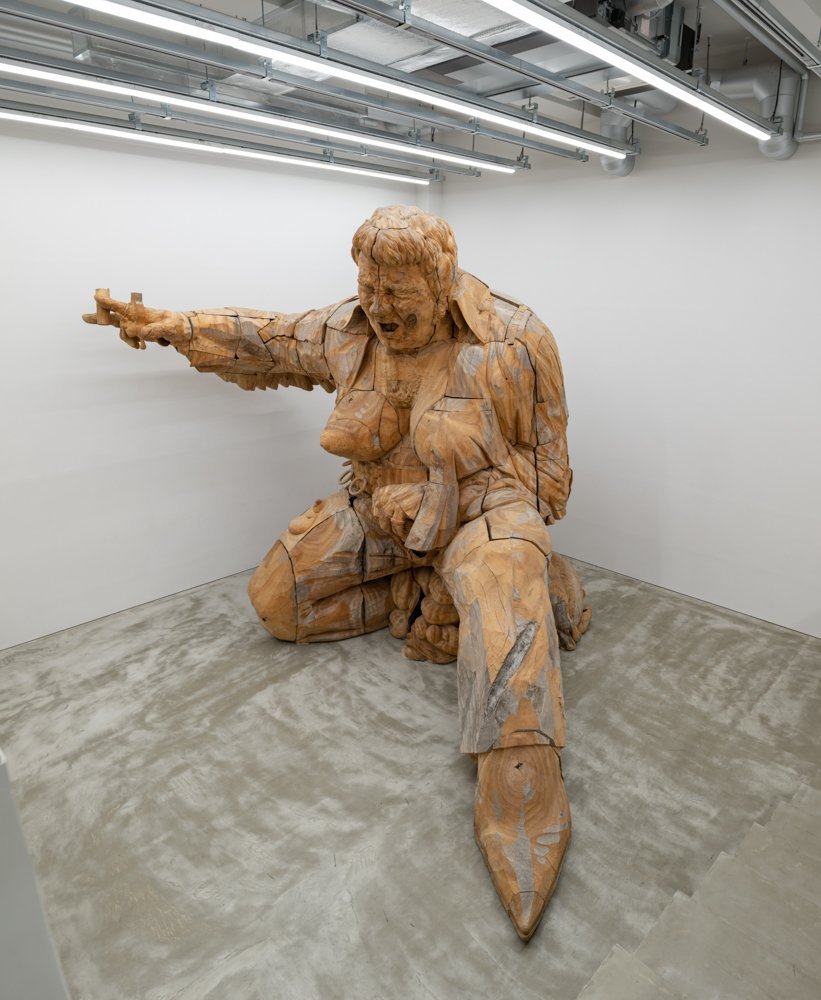
MORI Osamu, Jamboree – EP, 2014
H.385 × W.406 × D.365 cm © Osamu Mori, in courtesy of PARCE Photo: Nobutada Omote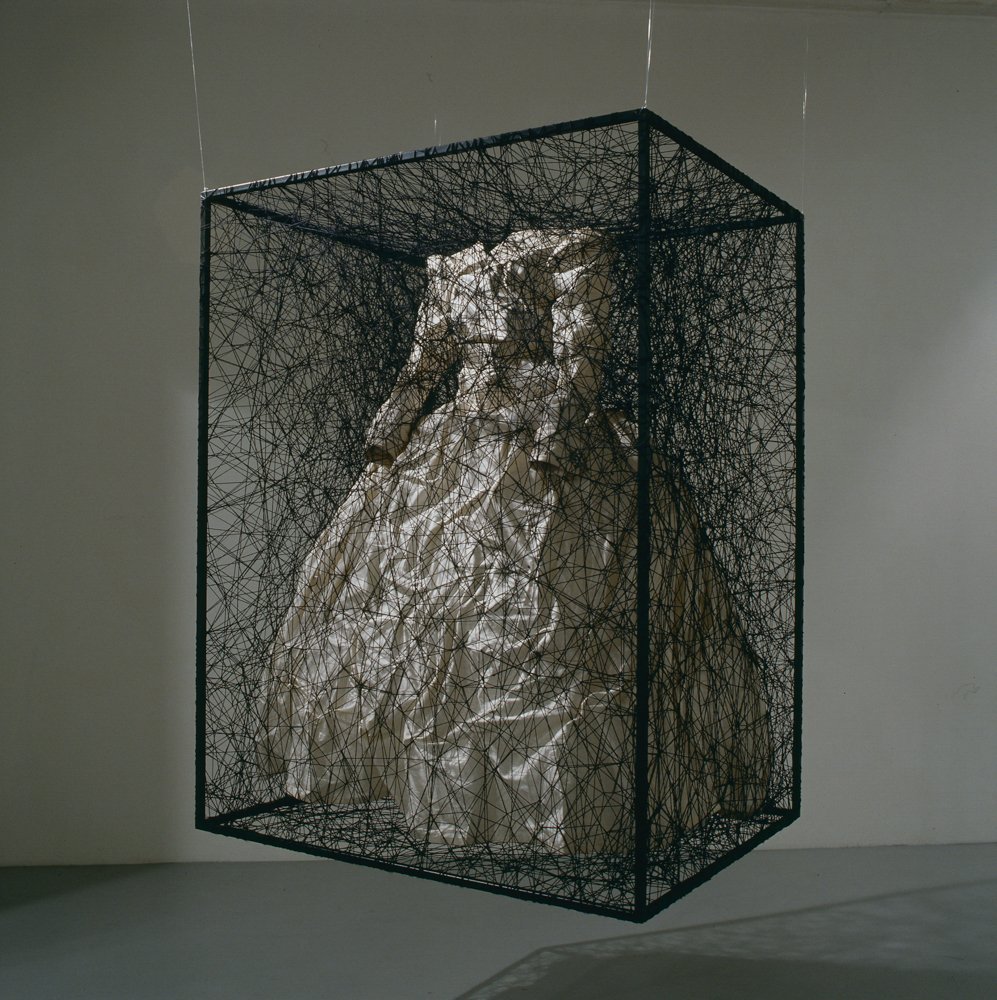
SHIOTA Chiharu, ZUSTAND DES SEINS, 2008
H.130 × W.100 × D.80 cm © JASPAR, Tokyo, 2024 and Chiharu ShiotaCourtesy of Kenji Taki Gallery Photo: Tetsuo Ito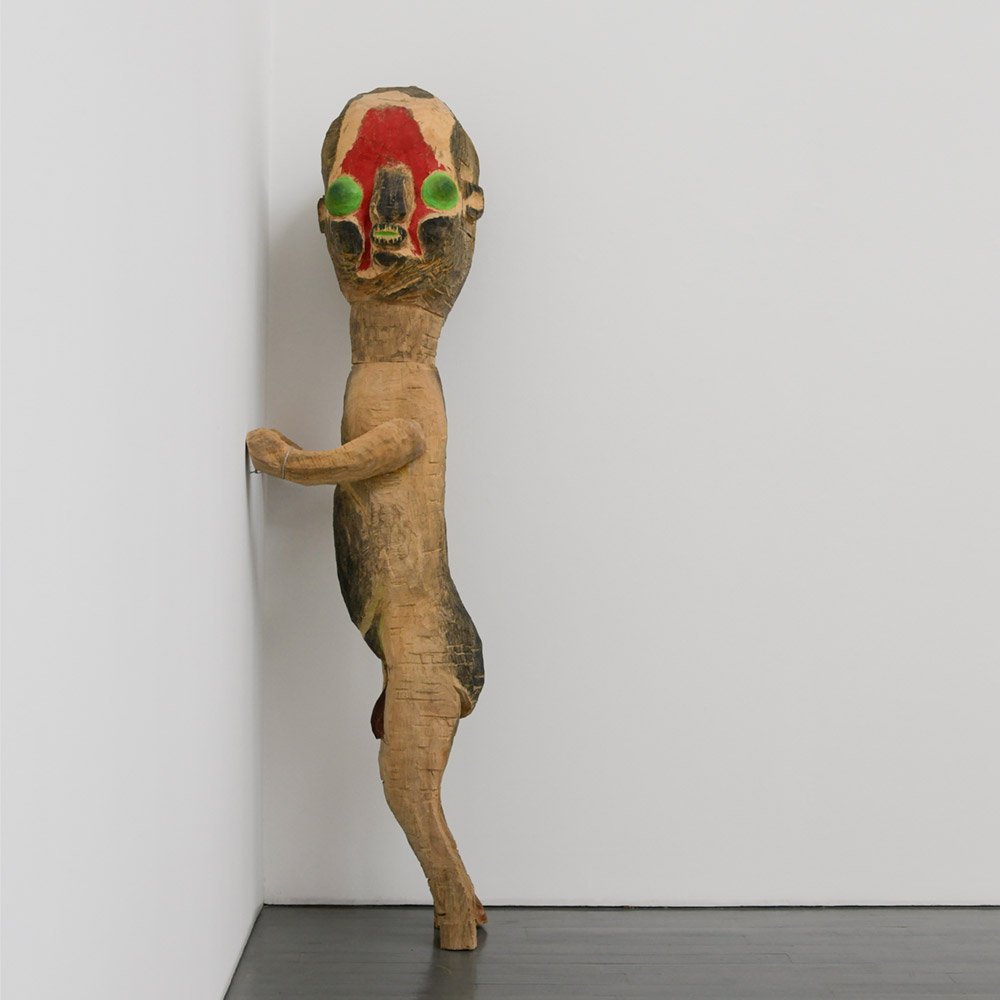
KATO Izumi, Untitled, 2004
H.205 × W.56 × D.52 cm ©︎ 2004 Izumi Kato Courtesy of the artist Photo: Yusuke Sato
4. Breakdown and Rebirth
Considering TAKAHASHI’s roots in the Tohoku region, the Great East Japan Earthquake and the accident at the Fukushima Daiichi Nuclear Plant in 2011 had a particularly big effect that changed his sensibility. Introduced in this section are works that satirize social behavior since the accident; works that represent the first actions of artists after the earthquake; and other creative endeavors undertaken in response to these events. The works themed around life and rebirth, that are on display in the high, vaulted space of the Atrium, are one of the exhibition’s highlights.
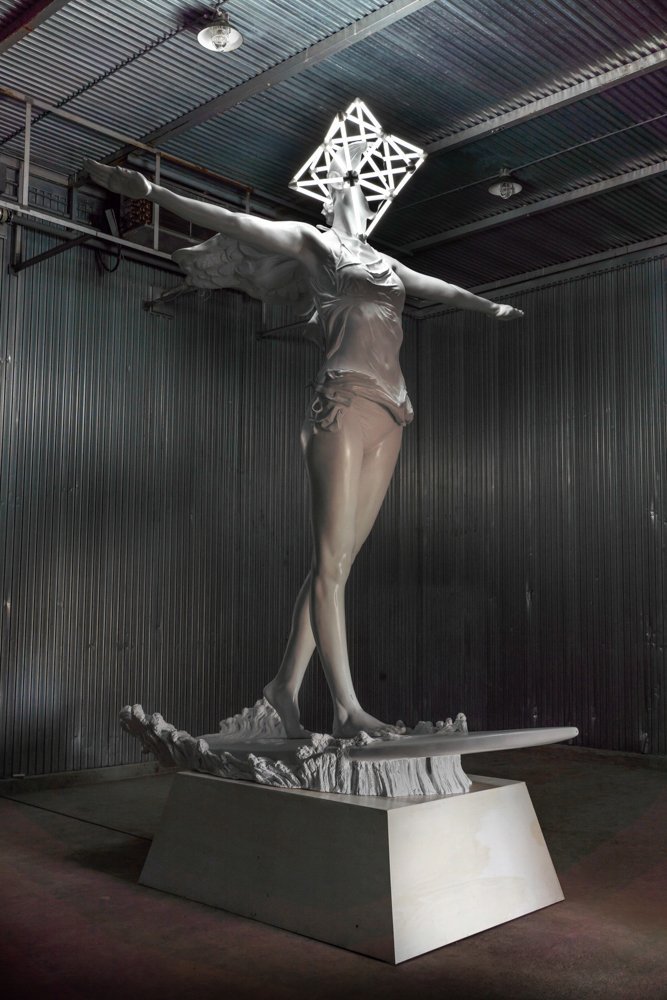
ODANI Motohiko, Surf Angel (Provisional Monument 2), 2022
H.560 × W.423 × D.376 cm © ODANI Motohiko Courtesy of ANOMALY Photo: Hidehiko Omata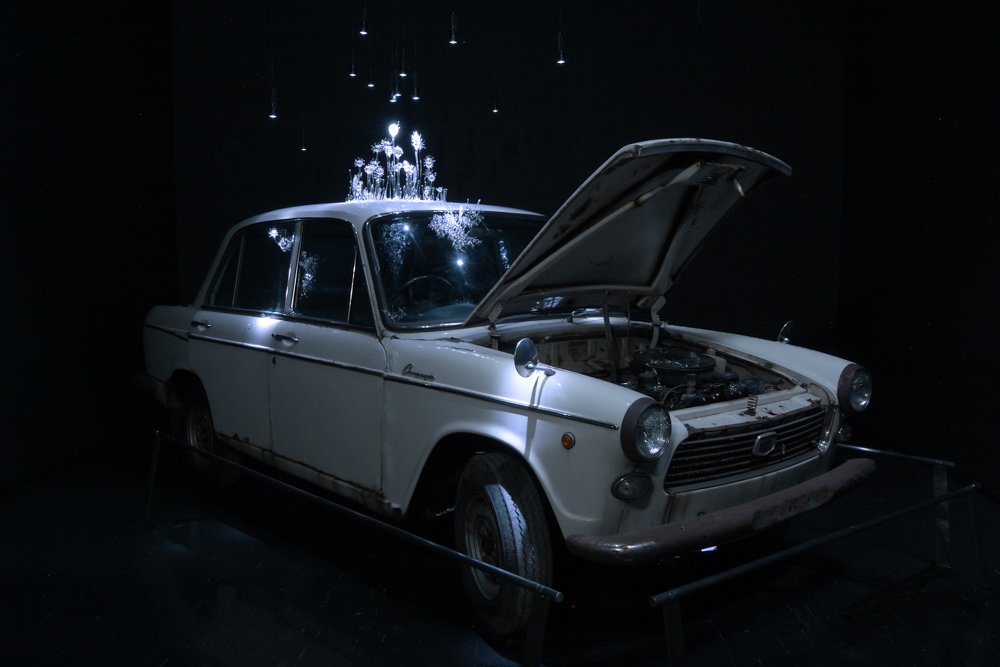
AOKI Mika, Her songs are floating, 2007
H.170 × W.380 × D.150 cm Installation view of the exhibition “Born in HOKKAIDO” at the Hokkaido Museum of Modern Art, 2007. Photo: Yoshisato Komaki
5. The Redefinition of “Self”
A special emphasis in the collection of TAKAHASHI, who after the Great East Japan Earthquake no longer sensed “reality” in strongly subjective statements, is placed on artworks that reexamine the position of the “self” as a subject that makes such statements. Standing out are elements that highlight processes of things being created, their state of incompleteness or unfinishedness, or the outcome of which seems to be entrusted to the effects of external environments and phenomena. For this section, works were selected from the collection that particularly reflect this new sensibility, in a variety of formats and media including painting, installation and ceramic art.
6. Back onto the Street
In recent years, TAKAHASHI has been especially fascinated by creative activities of artists that are informed by a world view from a “street” kind of perspective. For TAKAHASHI, who once devoted himself to a student movement, encountering these works is certainly something that brings back memories of avant-garde art, and an experience that takes him back onto the street so to speak. Showcased here is the present state of the Takahashi Ryutaro Collection as it continues to grow, while incorporating the latest trends of young artists.
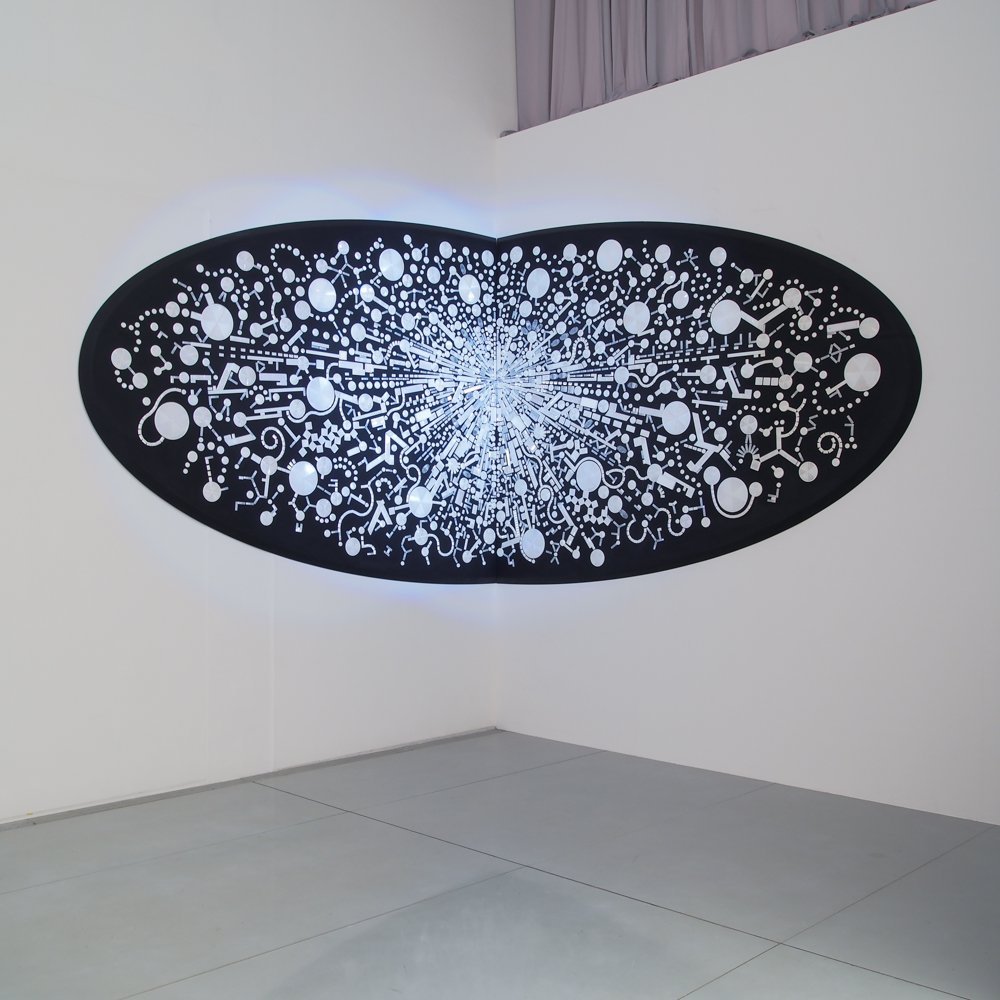
SUZUKI Hiraku, Road (Retina), 2013
H.240 × W.600 × D.9.7 cm Installation view of the exhibition “Takahashi Collection Mindfulness!” at Kirishima Open-Air Museum, Kagoshima Photo: Mie Morimoto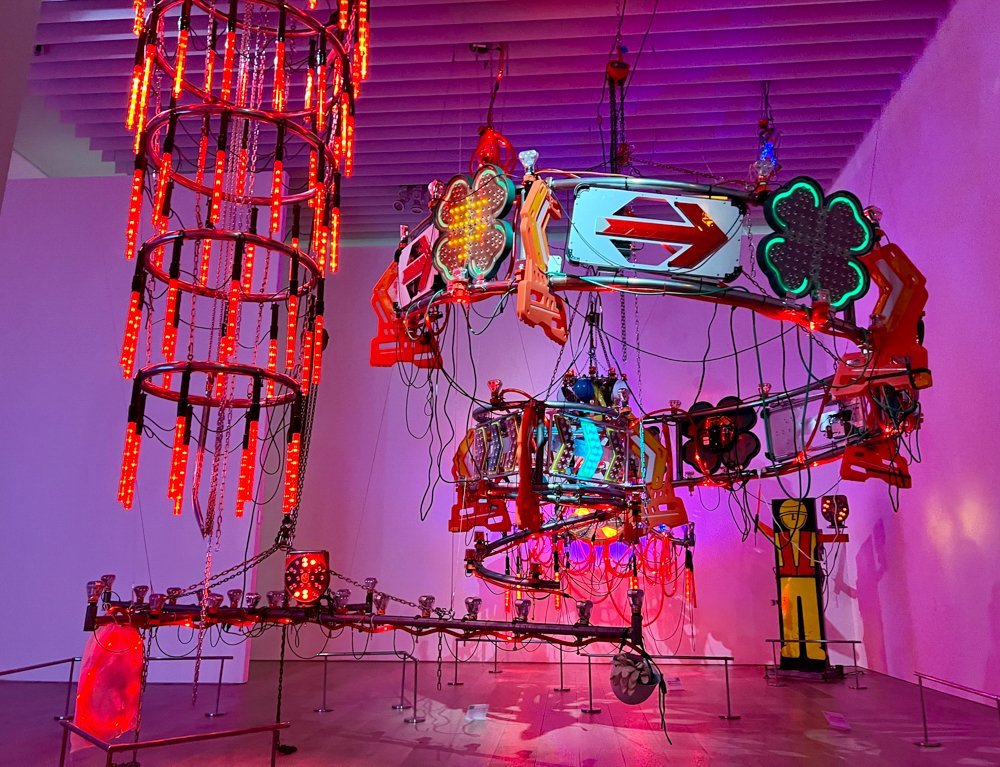
SIDE CORE / EVERYDAY HOLIDAY SQUAD, rode work tokyo_ spiral junction, 2022
H.199 × W.305 × D.305 cm Photo: Natsuko Fukushima, Tokyo Art Beat
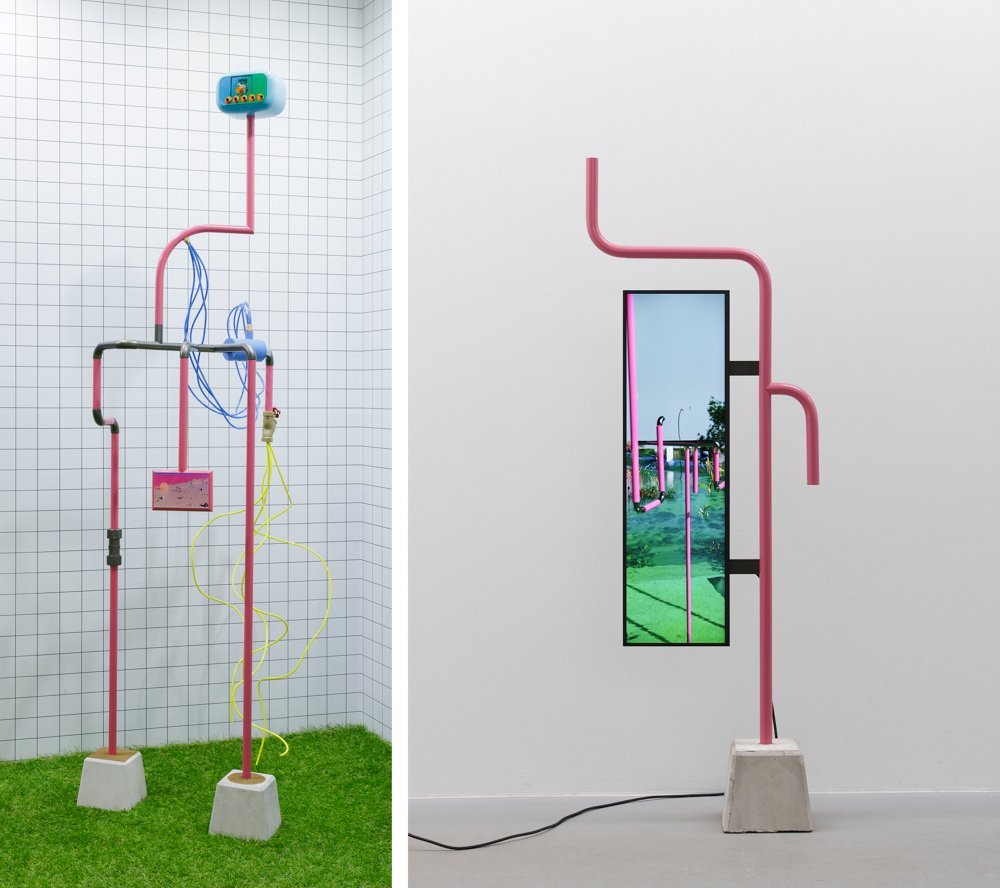
FUJIKURA Asako, Water Pipe Man - beach mark, 2023
L)H.220 × W.63 × D.75 cm/R)H.136 × W.45 × D.15 cm©︎ Asako Fujikura, Courtesy of the artist and WAITINGROOM Photo: Shintaro Yamanaka (Qsyum!)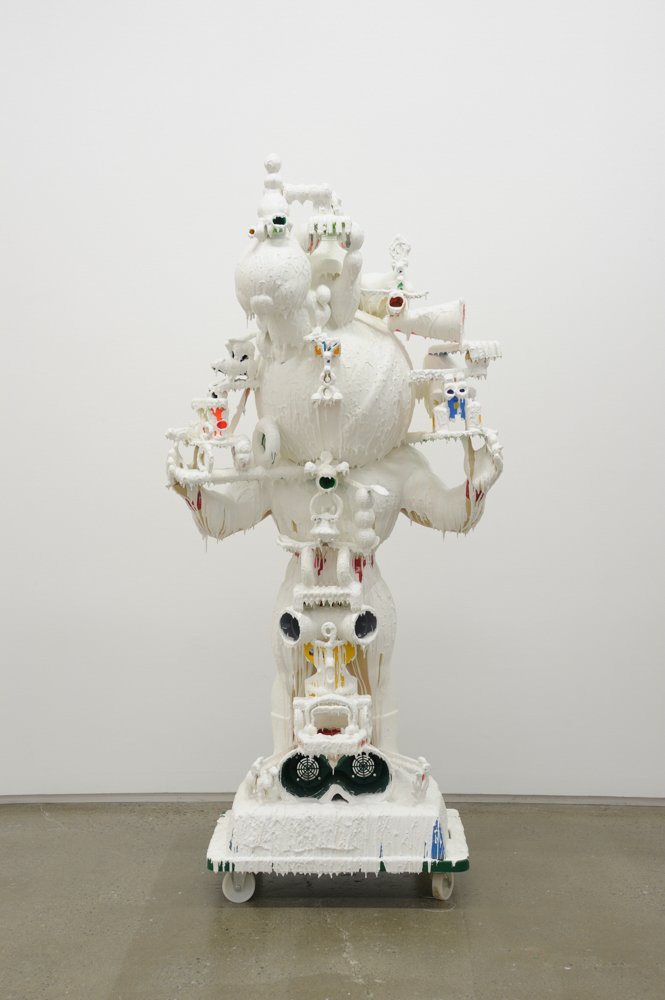
KANEUJI Teppei, White Discharge (Built-up Objects #21), 2012
H.168 × W.84 × D.55 cm Photo: Shigeo Muto
Takahashi Ryutaro Collection
The art collection that the psychiatrist TAKAHASHI Ryutaro (1946- ) started in 1997, has grown to become one of the world’s biggest collections of Japanese contemporary art. Starting off with works by KUSAMA Yayoi and GODA Sawako, the collection comprises especially works by Japanese leading artists since the 1990s, many of whom are represented here with early and representative works. Up to now, the collection has been showcased in exhibitions at 26 public and private art museums across Japan, including the ”neoteny japan – Takahashi Collection” exhibition (2008-2010, Kirishima Open- Air Museum/Kagoshima, Ueno Royal Museum, others), and the exhibitions “Takahashi Collection: Mindfulness! (2013-2014, Nagoya City Art Museum, others) and “Takahashi Collection: Mirror Neuron (2015, Tokyo Opera City Art Gallery). In 2020, in recognition of his significant contribution to the promoting and popularization of contemporary art, TAKAHASHI received the Agency for Cultural Affairs Commissioner’s Commendation in 2020. His collection encompasses over 3,500 items, and still continues to grow around a core defined by recent trends and efforts of young artists.
Information
- Exhibition Period
Saturday, 3 August – Sunday, 10 November 2024
- Opening Hours
10 AM - 6 PM (Tickets available until 30 minutes before closing.)
*Open until 9 PM on Fridays in August- Closed
Mondays (except 12 Aug., 16 Sep., 23 Sep., 14 Oct.)
13 Aug., 17 Sep., 24 Sep., 15 Oct., 5 Nov.- Venue
Museum of Contemporary Art Tokyo, Exhibition Gallery 1F/B2F
- Admission
Adults - 1,500 yen / University & College Students, Over 65 - 1,100 yen
High school & Junior High School Students - 600 yen
Elementary School Students & Younger - free
*20% discount for a group of over 20 people.
*Ticket includes admission to the MOT Collection exhibition.
*Persons with a Physical Disability Certificate, Intellectual Disability Certificate, Intellectual Disability Welfare Certificate, or Atomic Bomb Survivor Welfare Certificate as well as up to two attendants are admitted free of charge.
[Silver Day] Those over 65 years old receive free admission on the third Wednesday of every month by presenting proof of age at the ticket counter.
[Summer Night Museum 2024]
Special discount for admissions after 5 PM on August 9, 16, 23 and 30.
Students: Free with valid identification / Adults & over 65: 20% discount with valid identification
[Students Day supported by Bloomberg]
Students can view the exhibition for free by presenting a valid ID at the museum's ticket counter on September 7 and 8.- Organized by
Museum of Contemporary Art Tokyo operated by Tokyo Metropolitan Foundation for History and Culture
- With the special cooperation of
Takahashi Ryutaro Collection
- Supported by
Kokoronokai Medical Corporation



